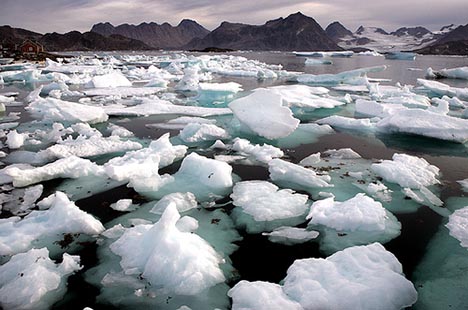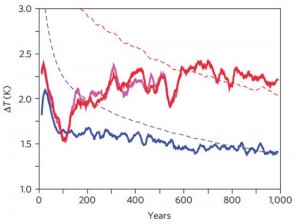November 27, 2013 – With Warsaw the latest meeting place for politicians attempting to get a handle on climate change action one thing has become perfectly clear. We have already done sufficient damage to the atmosphere and the ocean by dumping CO2 into both by the megaton that we will pay for it for centuries to come. That’s because there is a latent effect on the planet from all that CO2 so even if we go cold turkey on fossil fuels we will see the consequences for our past behaviour. Maybe that’s why our politicians cannot come up with mitigating strategies for dealing with climate change. Maybe they know and don’t want us to know that they know. So they obfuscate, talk and dither until the cows come home while energy companies continue to mine the coal, pump the oil, and burn the stuff with no end in sight.
The latest research using climate simulation models has led to some startling conclusions. The work done by Princeton University scientists has appeared in the journal Nature Climate Change. It shows that if were to reduce CO2 output to zero emissions today that we would initially see Earth’s temperatures stabilize and then begin to decline over the next century, but then the long term impact would show the decline reverse with temperatures increasing over the next 400 years (as depicted by the red line on the graph depicted below while the blue line indicates declining atmospheric CO2).
Why would a climate model show such contrary results?
One of the reasons state the scientists has to do with latency. The ocean is the principle culprit. It is not only a carbon sink but also a heat sink. Initially the ocean is great at absorbing both. The polar oceans are showing us that right now, with Arctic seasonal ice thinning and shrinking and atmospheric temperatures over the Arctic rising faster than anywhere else on the planet. But the ocean only has so much absorptive capacity and the climate models show that over time it slows down. So although ceasing to burn fossil fuels today may buy us a century of cooling according to the research, the next four centuries that would follow would see the temperatures rise even higher than those at CO2 atmospheric peak.
These conclusions contradict scientific consensus which states that global temperatures once we stopped emitting CO2 would hold steady and then begin to decline. But the consensus has not accounted for the role the ocean will play.
The researchers also show that another point of consensus may be wrong as well. Scientists had thought that the tipping point of atmospheric carbon would be 1,000 billion tons before we would see temperatures climb by 2 degrees Celsius (3.6 Fahrenheit). But with the Princeton climate model it appears that warming at this level will occur with the atmosphere taking up 750 billion tons of CO2. Today we have already reached the 500 billion ton mark so we are much closer to the climate change benchmark than previously thought particularly when you consider the rapid growth in demand for energy by Developing World countries in their aspiration to live like those in the Developed World.














